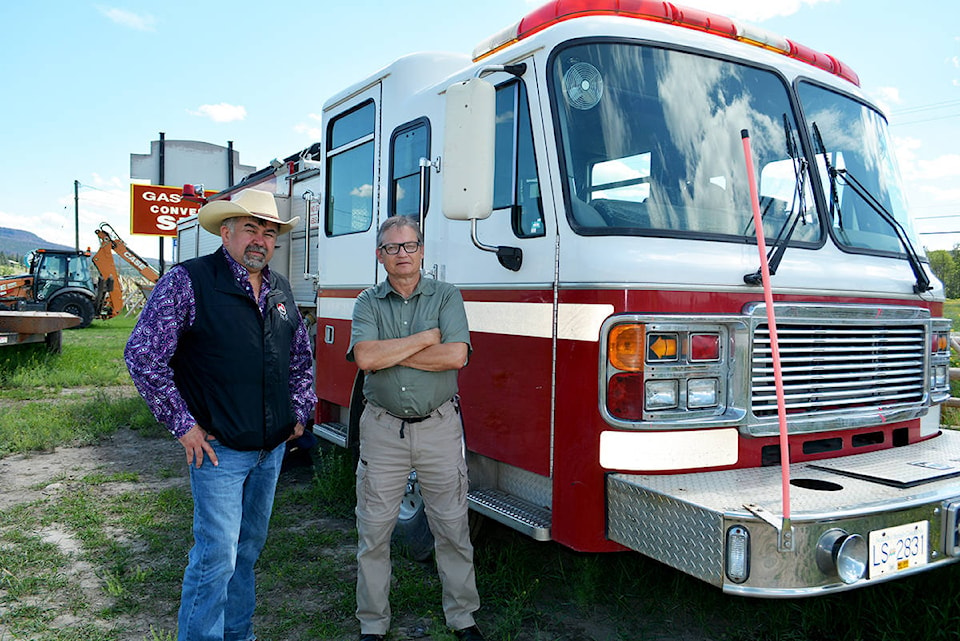A Tsilqhot’in First Nations community and the City of New Westminster are forming a sister relationship in the spirit of truth and reconciliation.
In 2006 Tl’etinqox (Anaham) Chief Joe Alphonse became friends with Chuck Puchmayr, who was an MLA at the time, and is now a New Westminster city councillor.
“I was dealing with the New Westminster school board regarding the site where our Tsilhqot’in war chief was hanged on July 18, 1865 for protecting our land during the Chilcotin War,” Alphonse said. “Chief Ahan is most likely buried in New Westminster. There is a possibility his remains were moved and one of those locations is where a high school was built on top of an old cemetery in 1948.”
Five other chiefs were hanged in 1864 near Quesnel.
Read more: Trudeau to formally exonerate Tsilhqot’in war chiefs hanged 1864/65
The Tsilhqot’in wanted to try and see if they could bring Ahan’s remains home, but it wasn’t possible, so instead they held ceremonies in New Westminster and Alphonse and Puchmayr began forging a relationship, with the City’s mayor, Jonathan Cote, fully endorsing the idea.
“As the City of New Westminster engages with the truth and reconciliation process we feel that it is the right time to engage and forge relationships with First Nations including the Tsilhqot’in,” Cote said.
“We need to acknowledge the past wrongs that have occurred in our city’s history while at the same time make room to foster new relationships.”
Cote said a sister city relationship between B.C.’s oldest incorporated city and the Tl’etinqox First Nation will set the foundation for meaningful reconciliation and partnerships.
“I look forward to the signing of this groundbreaking agreement and creating a mutual relationship, sharing in the culture, education and economics of our two communities,” Cote added.
Last year Puchmayr, wanting solidify the sister relationship between the two communities, made it possible for the City to donate a fire truck to Tl’etinqox.
“I asked our fire chief what he gets for the trucks at auctions and he said $5,000 to $7,000 and they end up just being taken apart or they are used in the movies,” Puchmayr said while he was in Tl’etinqox on July 11.
“I thought that was a real shame because there are so many communities that to them this would be gold.”
Puchmayr brought forth a resolution to donate the truck and it was supported unanimously by mayor and council.
The fire truck he was able to donate still has at least 10 years of life, he added.
“It’s not good for driving six times a day through the city, but it’s perfect for small municipalities or First Nations communities. So that’s what we are going to do from now on and donate the fire trucks.”
Coincidentally, the City was in the process of decommissioning the fire truck when the wildfires started in the region.
“I heard about the evacuation order, I told the fire chief we needed to get the truck up here immediately, so we hired a flat deck and hauled it to Williams Lake,” Puchmayr said.
The New Westminster Fire Dept. had firefighters in Williams Lake doing structural protection at the time and when Puchmayr asked if they could come out and do some training at Tl’etinqox, because the area was under an evacuation order the Fire Commissioner said the firefighters could not be covered under insurance.
“We drove a group out from Tl’etinqox into Williams Lake and did a crash course for about an hour,” Puchmayr said. “We then delivered the truck out to the community and the very next day, right across the highway, there were some embers flying from the fire coming down the mountain from the other side of the river. The embers started landing on the field and there were three fires burning.”
Read more: Crews stop fire at the doorstep of Tl’etinqox community
They were able to use equipment on the truck, hooked onto a fire hydrant and running pumps with three hoses to water down the buildings, the propane tanks and keeping everything damp and attack the fires.
Puchmayr said he understood and completely supported the move by Alphonse and the community to defy the evacuation order last summer.
“I think the position Chief Alphonse took, actually brought resources to the people.”
Last week, Puchmayr returned to the community, this time with a used Ford Police Interceptor from the New Westminster Police Department.
Tl’etinqox will be using the vehicle for its security program, Alphonse said.
A second one was donated to the Tsilhqot’in National Government, which Alphonse said will probably be used by administration.
When Puchmayr received a pair of beaded moose hide gloves from Alphonse to show appreciation for the police vehicle, Alphonse joked that it was a pretty good deal trading gloves for the vehicles.
Puchmayr laughed and replied, “it used to be the other way around.”
news@wltribune.com
Like us on Facebook and follow us on Twitter
